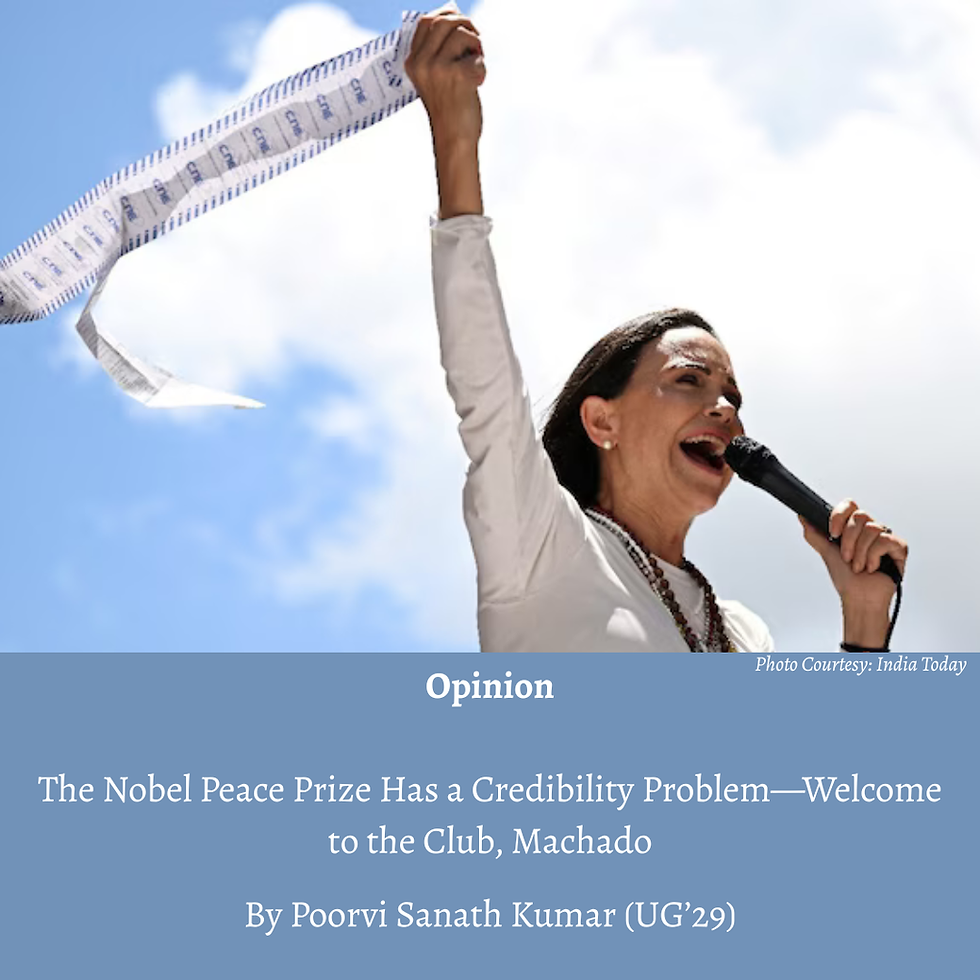The Castelessness of Ashoka
- The Edict
- Apr 12, 2023
- 4 min read
By Rohan (UG23)
Author’s note: this piece is written by the author in full cognisance of their position as someone possessing caste privilege. The piece’s language and references reflect this position. The sole intention of this piece is to make sense of and criticise the climate of silence surrounding conversations on caste at Ashoka, and acknowledge how they take place in a deeply insulated environment.
In her final townhall with the students, former Vice Chancellor Malabika Sarkar effectively noted that class is a more important determinant of equity than caste, and Ashoka, through its financial aid policy, fulfils that.
Coming from this perspective, the very social environment at Ashoka elides diversity. Ashoka's key axis of ensuring accessibility and quality, as clear through the Vice Chancellor’s townhall, and previous VCs’ interventions on the matter (PBM), has been its financial aid policy which promises "necessary financial support which can help admitted candidates bridge the gap between the cost of the programme and their ability to pay". At a level of policy, this is blind to any form of socio-religious background and does not, in that sense, discriminate or even risk discrimination on the lines of caste, tribe, religion and gender, among other axes.
However, this indifferent non-recognition constitutes the very issue. Only so much can be learnt from perspectives on these matters from people who have always been advantaged by socio-political structures (including the author of this piece, who benefits from caste and gender privilege). Ashoka does not carve out a space for vast segments of society, instead accepting students for their ‘merit’ and then helping the ‘meritorious’ who cannot afford this kind of education, access it. The emerging diversity is a diversity of the rich—it has created a space where the lack of exposure to people from different backgrounds has resulted in a siloed, theoretical, and monotonous understanding of inequality, or privilege, or ‘oppression’. In the process, Ashoka has institutionalised a lack of exposure, deliberately creating an exclusively Savarna Hindu space.
This policy of "inclusion" has run its course. It has made Ashoka a space where the very paucity of caste and religion-based differences has made 'Dalits' or 'Adivasis' or 'Muslims' an ‘object of study’ in the mind of a common Ashokan/ student. You can study caste or Islam—something that surrounds you—like the way you study something distant, like capitalism. From the experiential and social it becomes drawn to the realm of the academic. Having taken many such courses, the limitations of such an approach has become clear to me because the question that gets obscured is this: can something like caste be ‘studied' adequately by students who have never experienced it? This is not to say that people from diverse castes be included to “educate” the Savarnas, but simply that such an inclusion would necessitate creating new spaces that would fundamentally alter its social life and the kinds of conversations that come with it. For instance, one can expect there to be more critical conversations on North Indian Hindu festivals which currently go unquestioned.
Coming from mostly elite, English-speaking schools in urban areas, there is bare minimum exposure to people from different communities. In my own school’s class, for instance, there were no students from the DBA (Dalit, Bahujan, Adivasi) community. University, coming from such a context, must expose you to the kind of diversity that is broadly present in our society. This exposure means you do not see people as being those who can be studied, but as people with actual, complex experiences. This is absent at Ashoka. Instead the experience of caste or religion, is essentialisable. It can be brought up in defense of or against any issue, without any heed to or stake about its actual implications on people coming from these communities. The explicit understanding that undergirds most classroom conversations on caste or tribe is that no student from these communities is sitting in the class with you. Even the way in which this piece itself is worded, the way it writes of caste comes from a very distanced point of view reflective of caste privilege, and despite speaking of it critically, is not very different from the way caste exists at Ashoka. It is instead a product and reflection of this very pattern/ convention. This has led to echo chambers everywhere, where the discourse on privilege has become more baseless than constructive, more accusatory than based on self-recognition.
Despite the multiple issues in Delhi University, even spending an hour in that space introduces you to caste much more substantively than Ashoka ever does. Caste and religion surrounds you much more palpably than at Ashoka. The few hours/ days I have spent in North Campus have exposed me to these in a manner that Ashoka, as a sanitised space, does not even come close to. The reality of caste, of language, of region, exist as a reality outside Ashoka, without you even having to look for it. This is not to say that this does not come at its own costs, but that the institutional design of Ashoka elides such awareness and knowledge that invariably comes outside the classroom, not within.
Unfortunately, good education within the classrooms does not compensate for lack of awareness outside it. Learning and teaching about caste in classrooms from a literary, sociological, or political perspective is not enough in a casteless institute. What is needed is a recognition of caste and the many costs its absence has resulted in, and based on this, taking steps to make the institution actually inclusive, to make its education actually accessible, possibly through a system of affirmative action that has hitherto only remained a ‘conversation’. Unless this is done, Ashoka's vision, whatever that may be, would remain a fever dream.







Comments